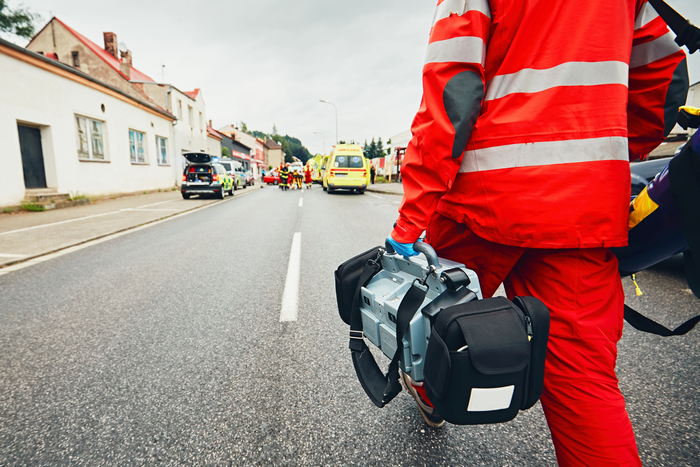
If you were to design the ideal portable suction machine for emergency medical situations, what characteristics would you choose? The equipment used by EMS professionals takes a beating on a regular basis. Emergency calls happen in the most inopportune locations at any time of the day or night. The tools must be designed to withstand inclement weather, temperature extremes, and the rough-and-tumble arena of prehospital medicine. And when it comes to something as vital as your portable suction machine, there's no room for error. Let’s look at some important criteria when choosing the ultimate suction machine.
Size
The first consideration is size. The unit must be small enough to be carried on each and every call. Imagine lugging a boxy suction unit along with the rest of your ALS equipment. There simply aren't enough hands on scene to bother with bulky gear, especially if you work in a rural setting where manpower is scarce. If it's just you and your partner on scene until the volunteers show up, you'll need equipment that is small and lightweight, portable enough to carry, or small enough to stow in your airway bag.
But don’t trade size for power. In our imaginary suction design, there's no need to compromise.
Power
Even if the unit is small and portable, it must still be powerful. What good is a suction unit if it doesn't provide powerful negative pressure? When you're working that code who happens to purge their stomach contents just as you're preparing to intubate, an inadequate suction unit will simply not do.
Today's technology allows for smaller internal components that are more lightweight than their predecessors yet still able to generate the necessary power for effective suction.
Power sources themselves have also come a long way. Rechargeable batteries are now more lightweight and last longer than older models. Alternative power sources, such as defibrillator batteries, along with alkaline replacements, equate to power on the go—great for disaster scenarios when electricity is in short supply.
Design
The outer design of your portable suction unit is important, as well. EMS equipment is not only exposed to the weather, necessitating an outer shell that is waterproof and can protect the delicate internal components but must also be solid enough to withstand rough handling.
Anyone who has ever ridden inside an emergency vehicle knows that it's rarely a smooth ride. And once you arrive on scene, there's no telling what your equipment will be exposed to. Patients located off-road can mean a trek through rugged terrain. Your portable suction unit must be able to handle the jostling of uneven ground.
Your suction unit can also be a playground for pathogens. The nature of oral and nasal suctioning means the unit is constantly subjected to dangerous bugs, which can be hidden in nooks and crannies and spread to personnel. The outer shell of your suction unit should be easy to disinfect, with parts and accessories that can be disassembled for cleaning. The last thing you want is your unit to become a vector.
The suction design should also be flexible, with different styles and sizes to choose from. There's no "one size fits all" for suction units because your needs will depend on several factors. They include:
- Size of your agency: How many hands are available on scene?
- Where the unit will be kept: standalone or as part of the airway or trauma bag?
- Type of response: For rugged terrain or tactical calls, the smaller the unit, the better
- Power availability: You may need alternative power sources or alkaline replacements
- Number of units: When outfitting an MCI trailer, size and cost may be critical
Fortunately, today's portable suction units come in many different sizes and styles. There is no need for you to contemplate the ideal suction machine for emergency medical scenarios because they already exist.
There are small, lightweight units, ideal for tactical scenarios, and larger, more proficient units that offer adjustable pressure for those special patients (pediatrics and the elderly). Today's units are sturdy, powerful, and easy to maintain, offering efficient and effective suction for any prehospital scenario. Now, your toughest decision is which one to choose.
Editor's Note: This blog was originally published in August, 2017. It has been re-published with additional up to date content.
















